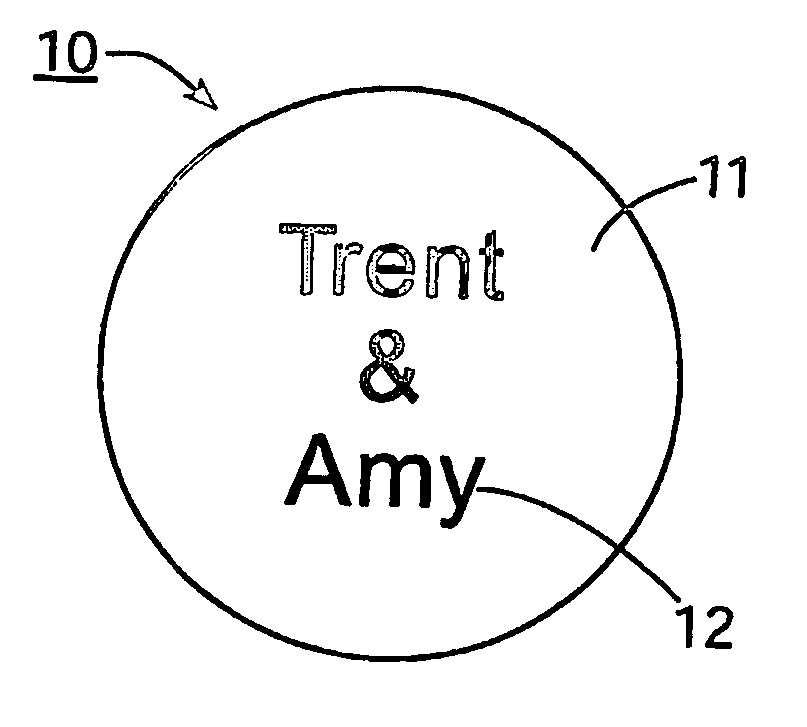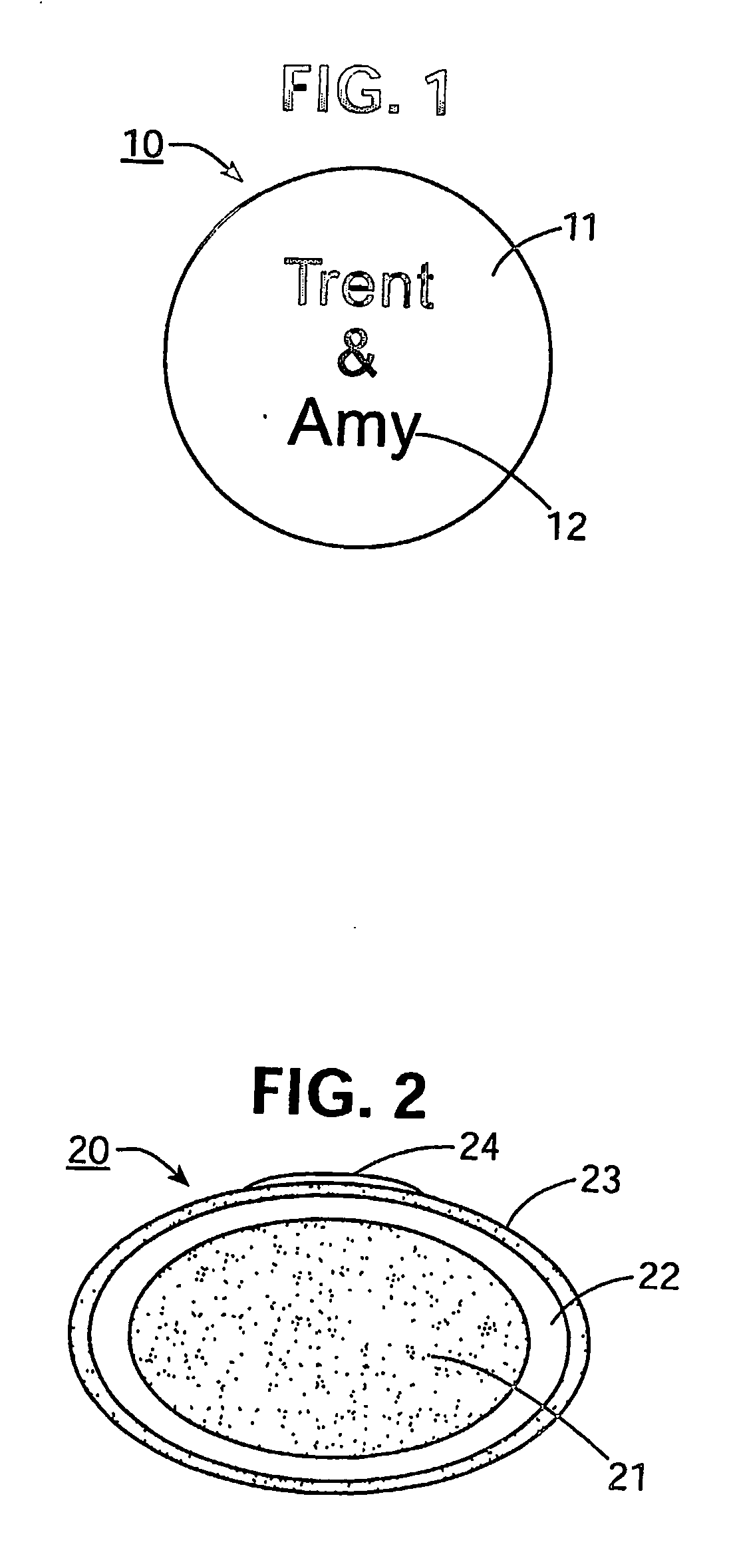Method of coloring panned confectioneries with ink-jet printing
a confectioneries and ink-jet printing technology, applied in the field of ink-jet printing methods, can solve the problems of large amount of equipment required, long time-consuming and laborious, and the process of building the shell, including the coloring steps, and achieve the effect of reducing the amount of equipmen
- Summary
- Abstract
- Description
- Claims
- Application Information
AI Technical Summary
Benefits of technology
Problems solved by technology
Method used
Image
Examples
Embodiment Construction
[0027] As used herein, the term “pan” refers to a coating vessel, drum, tube, or pan for use in a film coating or panning process. The term “panning” refers to a coating or panning process. The term “panning apparatus” refers to an apparatus for panning or film coating incorporating a pan.
[0028] As used herein, the term “uncolored surface” means that no color coating has been applied to the surface. Therefore, as used herein, the terms “uncolored sugar surface” and “uncolored sugar shell” mean that the surface of a sugar shell on a panned confectionery is substantially free of any colorant or dye, and substantially has the appearance of sugar. That is, the sugar shell is substantially white. As will be recognized by those of ordinary skill in the art, for relatively thin sugar shells, some of the color of the underlying confectionery may be visible through the sugar shell. Uncolored sugar surfaces and uncolored sugar shells may contain a pigment, such as titanium dioxide or calcium...
PUM
 Login to View More
Login to View More Abstract
Description
Claims
Application Information
 Login to View More
Login to View More - R&D
- Intellectual Property
- Life Sciences
- Materials
- Tech Scout
- Unparalleled Data Quality
- Higher Quality Content
- 60% Fewer Hallucinations
Browse by: Latest US Patents, China's latest patents, Technical Efficacy Thesaurus, Application Domain, Technology Topic, Popular Technical Reports.
© 2025 PatSnap. All rights reserved.Legal|Privacy policy|Modern Slavery Act Transparency Statement|Sitemap|About US| Contact US: help@patsnap.com


